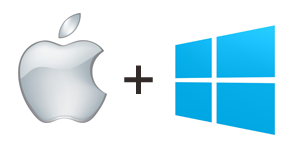 We’ve all been there: you order something online because it’s easier than going to a store. Then, you wait. You wait for the email telling you that your order has shipped. You wait for the doorbell to ring when UPS or FedEx attempts to deliver your package. You wait, and wonder if you should have paid for expedited shipping or, maybe, just gone to the store instead.
We’ve all been there: you order something online because it’s easier than going to a store. Then, you wait. You wait for the email telling you that your order has shipped. You wait for the doorbell to ring when UPS or FedEx attempts to deliver your package. You wait, and wonder if you should have paid for expedited shipping or, maybe, just gone to the store instead.
Rest assured that you’re not alone and that companies large and small are in a frantic race to solve the same-day delivery problem. The clear leader in the delivery arms race is Amazon. No other company can match their scale and geographic reach. In an effort to get orders to customers as quickly as possible, Amazon has built eighty fulfillment centers worldwide, with more on the way. These mammoth warehouses enable Amazon to offer same-day shipping in a dozen U.S. cities and overnight delivery pretty much everywhere else. Amazon CEO Jeff Bezos has even introduced the possibility of delivering products via small drones that could fly products to customers’ homes in less than an hour. The concept itself represents an innovative leap forward, but it is hampered in a practical sense by a lack of guidelines for the private use of drones as well as a not inconsequential negative perception of drones among the American public. The availability of drones for private use won’t happen until 2015 at the very earliest, when the Federal Aviation Administration is scheduled to release a set of rules for who can operate drones, and how, where, and when they can be used.
Amazon is not alone in their fierce quest for same-day delivery. UPS and Google are also exploring drone-based delivery as well as systems that combine traditional shipping methods with couriers handling the last leg of the delivery process. This process is not new, but what has changed is the prospect of online-only companies using these methods. There have been bike messengers and other kinds of couriers for decades, and local businesses (like Stop & Shop, Harvard Book Store and even Sweet Cupcakes) have been making same-day deliveries to customers in the Boston area for years. You might be surprised, though, to find your eBay or Amazon order delivered by someone wearing skinny jeans and a bike helmet rather than USPS blue or UPS brown.
It’s not just local courier services that are partnering with large online retailers to deliver orders. Uber, the popular car service app, has been testing their ability to deliver things other than people from point A to point B, including Christmas trees, and perhaps misguidedly, kittens. Technology pundits have speculated that Uber could be moving toward delivery and other transportation services as they expand their reach and improve their logistics.
Most interestingly, these developments indicate a maturation of online retailers’ business models and the growing presence of apps as part of the physical world. Websites like Webvan and Kozmo tested similar ideas during the first dot com boom, but they lacked the crucial infrastructure and technology to make it work on a large scale. Now, there are companies (like Amazon, Google, and eBay) with the size and logistical acumen to make it work, and there are localized services (like Uber and Postmates) with the human resources to make deliveries in minutes.
The most important piece of the puzzle is, of course, the consumer. In the last decade, we’ve reached a comfort level with shopping for almost anything on our computers, phones, and tablets, and we expect websites and apps that “just work.” The next step is replicating the immediate gratification of in-store purchasing with the convenience of online shopping, and there is no shortage of tech companies working to make that expectation a reality.

